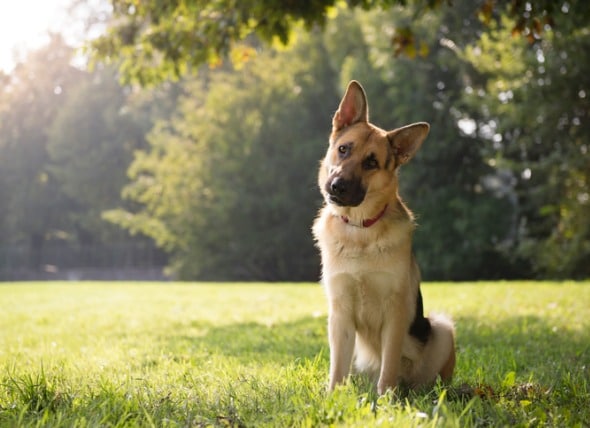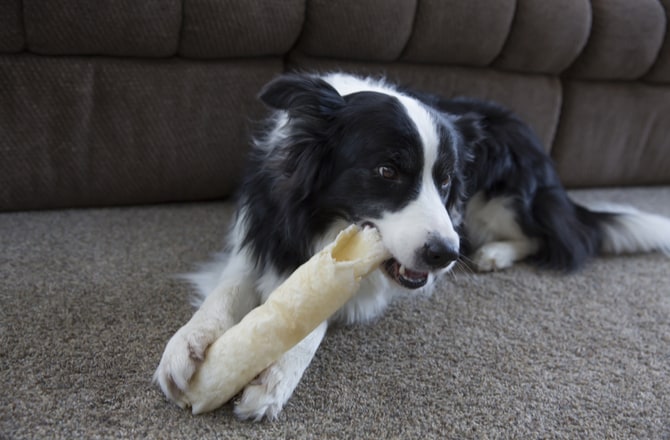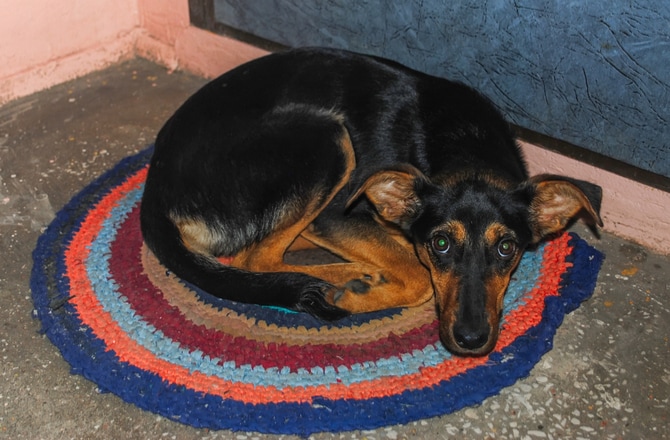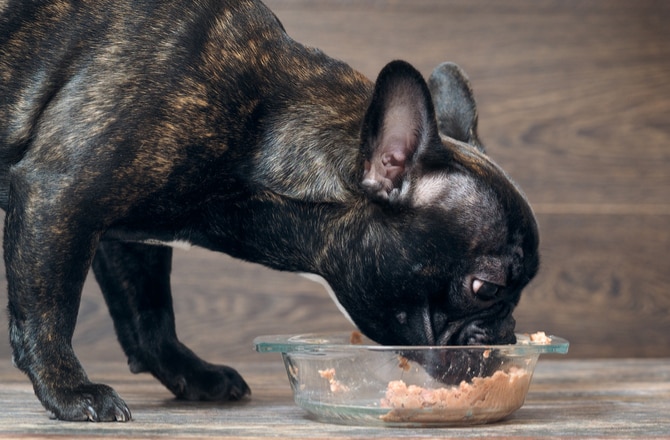What to Give a Constipated Older Dog

First, Determine the Severity of the Problem
Reviewed and updated on July 27, 2020 by Justine Alderman, DVM
It's important to pay attention to what's going into your pet and what's coming out—or not coming out.
Dogs can have sensitive digestive systems, and gastrointestinal (GI) problems can be a sign of a health issue. While many people may worry about diarrhea, you should also notice when your dog isn't pooping on their normal schedule.
If you do notice that your dog is having trouble pooping or has not pooped for a prolonged period of time, they could be constipated. Follow this guide to learn the signs of constipation in dogs and ways you can help your constipated dog.
Image: diego_cervo / iStock

Signs a Dog Is Constipated
Knowing these signs is important because if your dog is showing severe symptoms of constipation, you need to call your vet for an appointment.
Severely constipated dogs can become systemically ill, and they risk having permanent damage to their GI tract.
Here are a few signs to look for in constipated dogs:
Signs of Mild Constipation
If a dog is mildly constipated, the typical signs include:
-
Straining to defecate
-
Taking longer than normal to defecate
-
Seeming a little uncomfortable while defecating
-
Producing small amounts of feces that are harder than normal
If your dog is showing only mild signs of constipation, there are a few remedies that you can try at home to help ease their constipation.
Signs of Severe Constipation
If your dog is showing any of the below signs, then they are suffering from severe constipation and you need to call your vet immediately:
-
Showing signs of discomfort
-
Vomiting
-
Not eating
-
Hasn't pooped for more than three days
-
Seems weak or lethargic
-
Has an obviously distended belly
-
Has blood in his stool
If your dog is showing these signs, there are no at-home remedies that can help. They need to be seen and treated by a veterinarian.
Image: Jennay Hitesman / Shutterstock

5 Home Remedies for Mild Dog Constipation
If your dog's symptoms indicate that they are only mildly constipated, and they seem to feel fine otherwise, it is reasonable to try home treatment.
However, if your dog does not begin to defecate normally within a day of initiating home treatment, or their constipation becomes a recurring problem, call your veterinarian.
Here are five things you can do to help your mildly constipated dog:
Image: shymar27 / Shutterstock

1. Check Your Dog's Rear End
Take a look at your constipated dog's bottom—sometimes the problem will be obvious.
Long-haired dogs are at risk for developing mats of fur, oftentimes incorporating feces, which can completely cover the anus and make defecation impossible.
You can try removing these mats with electric clippers (not scissors!), but if you are unsuccessful or uncomfortable doing so, do not hesitate to call your veterinarian or a groomer.
If you see any other abnormalities (foreign material protruding from the anus, a tumor, etc.), make an appointment with your veterinarian immediately.
Image: Alvydas Kucas / Shutterstock

2. Increase Your Dog's Water Intake
Dehydration can cause constipation in dogs because the body responds by reabsorbing as much water as possible from the feces, making it hard and difficult to pass.
Always ensure that your dog has constant, easy access to fresh water.
This is especially important for dogs that have trouble getting around—due to arthritis or other mobility issues—as they may not feel like making the effort to visit the water bowl.
Feeding canned food, and even temporarily mixing in a small amount of extra water, is another simple way to ensure that your dog is getting enough to drink throughout the day.
Image: Irina Kozorog / Shutterstock

3. Go for More Walks
Exercise promotes normal movement within the GI tract. So if your dog is a little blocked up, consider taking them for an extra walk in the morning or afternoon—be sure your dog is well-hydrated first.
The exercise combined with the smells of other dogs that have "used" the area previously might just do the trick for your constipated dog.
Image: iamnottaa / Shutterstock

4. Give Your Dog More Fiber
Adding fiber to your dog's diet can be tricky, since it can help some cases of constipation but worsen others.
Therefore, it's best to start with a small amount and monitor how your constipated dog responds. Two safe options are:
-
Canned Pumpkin :Small dogs can get 1teaspoon mixed in with each meal. Larger dogs can handle up to a tablespoon or so. Note: Be sure you're using plain canned pumpkin, not pumpkin pie filling.
-
Psyllium (e.g., unflavored Metamucil): Try giving one-half teaspoon per 10 pounds of body weight mixed with a meal once daily to start.
Image: Liliya Kandrashevich / Shutterstock

5. Get Your Vet's Approval to Use Laxatives and Enemas
If natural laxatives for dogs aren't working, ask your veterinarian about other options.
Do NOT give your constipated dog a laxative without first speaking to your veterinarian. Many are not safe for dogs, particularly if used under the wrong circumstances.
But if your veterinarian is comfortable doing so, they may recommend that you try giving your mildly constipated dog a gentle laxative at home before making an appointment. Petroleum-based lubricant gels like Laxatone are a good first option.
If your dog won't eat the gel on his own (most are flavored to make them taste good), do not force feed him. Also,never give your dog liquid mineral oil to help with constipation. This product can cause severe pneumonia if inhaled.
Never give your dog an enema at home unless your veterinarian has recommended a specific product and has shown you how to safely perform the procedure.
Image: Alpa Prod / Shutterstock
Additional Slideshows
What to Give a Constipated Older Dog
Source: https://www.petmd.com/dog/slideshows/five-ways-help-your-constipated-dog

0 Response to "What to Give a Constipated Older Dog"
Post a Comment